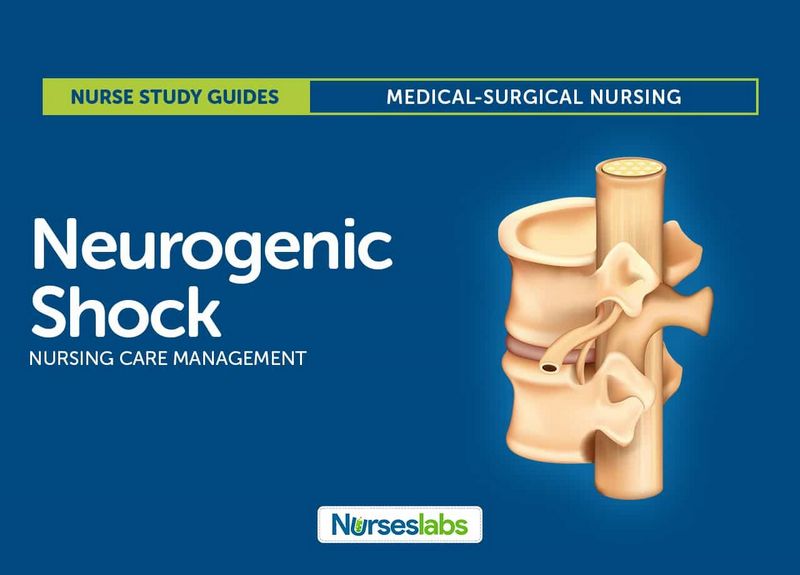
Exploring Rare Variants of Neurogenic MALS
Neurogenic MALS, also known as Median Arcuate Ligament Syndrome, is a rare vascular disorder that affects the celiac artery. This condition occurs when the median arcuate ligament, located in the diaphragm, compresses the celiac artery, causing symptoms such as abdominal pain, weight loss, and nausea. Diagnosing neurogenic MALS can be challenging due to its rarity and the similarity of its symptoms with other gastrointestinal conditions.
The diagnosis of neurogenic MALS involves a comprehensive evaluation of the patient’s medical history, physical examination, and imaging studies. A key step in the diagnosis is the measurement of the celiac artery’s blood flow using Doppler ultrasound or computed tomography angiography. Additionally, other tests such as upper endoscopy and gastric emptying studies may be performed to rule out other potential causes of the patient’s symptoms.
Once neurogenic MALS is diagnosed, the next step is to determine the most appropriate treatment approach. In some cases, conservative management, such as changes in diet and lifestyle, may help alleviate the symptoms. However, for patients with severe symptoms or those who do not respond to conservative measures, surgery may be necessary.
Neurogenic MALS surgery aims to relieve the compression of the celiac artery by dividing the median arcuate ligament or performing arterial bypass. This procedure can be performed through traditional open surgery or minimally invasive techniques, such as laparoscopy. The choice of approach depends on various factors, including the patient’s overall health, the severity of the condition, and the surgeon’s expertise.
In conclusion, neurogenic MALS is a rare vascular disorder that presents with symptoms like abdominal pain and weight loss. Accurate diagnosis is crucial due to the overlapping symptoms with other gastrointestinal conditions. Treatment options range from conservative measures to surgery, depending on the severity of the symptoms and the patient’s response to initial management. Understanding the intricacies of neurogenic MALS and its variants is essential for healthcare professionals to provide timely and appropriate care for affected individuals.
Understanding Neurogenic MALS
Neurogenic MALS, also known as Median Arcuate Ligament Syndrome, is a rare vascular condition that affects the celiac artery. It occurs when the median arcuate ligament, a fibrous band of tissue that normally supports the diaphragm, compresses the celiac artery and disrupts its blood flow.
Neurogenic MALS can cause a variety of symptoms, including abdominal pain, weight loss, nausea, and vomiting. These symptoms can be debilitating and significantly impact a person’s quality of life.
The exact cause of Neurogenic MALS is still not fully understood, but it is believed to be related to a combination of genetic and environmental factors. Some cases have been linked to rare genetic variants that affect the development of the median arcuate ligament.
Diagnosing Neurogenic MALS can be challenging, as the symptoms can be similar to those of other gastrointestinal disorders. However, medical professionals may use various diagnostic tests, such as imaging studies and blood tests, to help confirm a diagnosis.
Treatment for Neurogenic MALS often involves surgical intervention. Neurogenic MALS surgery aims to relieve the compression on the celiac artery by releasing the median arcuate ligament. This can help restore normal blood flow and alleviate symptoms. However, the success of surgery may vary depending on the individual case.
In summary, Neurogenic MALS is a rare vascular condition characterized by the compression of the celiac artery due to the median arcuate ligament. Understanding the causes, symptoms, and diagnosis of Neurogenic MALS is crucial for effective management and treatment of this condition.
Unraveling the Complexities of Neurogenic MALS
Neurogenic MALS, also known as Median Arcuate Ligament Syndrome, is a rare condition that affects the blood flow to the organs in the abdomen. This syndrome can have a significant impact on a person’s quality of life, leading to a range of debilitating symptoms.
One of the main treatment options for Neurogenic MALS is surgery. This procedure aims to alleviate the compression of the median arcuate ligament on the celiac artery, restoring proper blood flow to the affected organs. However, the decision to undergo surgery should always be based on a careful evaluation of the individual’s specific case and symptoms.
Recognizing the symptoms of Neurogenic MALS is crucial for an accurate diagnosis. Common symptoms include chronic abdominal pain, particularly after meals, weight loss, and nausea. These symptoms can often be mistaken for other gastrointestinal conditions, making the diagnosis challenging.
Diagnosing Neurogenic MALS usually involves a combination of medical history evaluation, physical examination, and various imaging studies. These imaging techniques may include Doppler ultrasound, CT angiography, or magnetic resonance angiography. A definitive diagnosis can be made by identifying the compression of the celiac artery and the presence of collateral blood vessels.
Understanding the complexities of Neurogenic MALS is essential for healthcare professionals in order to provide the best possible care for patients. By educating ourselves about this condition, we can ensure timely diagnosis and appropriate management, ultimately improving the lives of individuals with Neurogenic MALS.
Rare Variants: A Closer Look at Neurogenic MALS
Neurogenic MALS, also known as neurogenic median arcuate ligament syndrome, is a rare variant of MALS that affects the nervous system. Unlike classic MALS, which is primarily characterized by compression of the celiac artery, neurogenic MALS involves the compression of the nerves surrounding the celiac artery.
Neurogenic MALS can manifest with a variety of symptoms, which may differ from those seen in classic MALS. Common symptoms of neurogenic MALS include chronic abdominal pain, gastrointestinal disturbances, and neuropathic pain. These symptoms can significantly impact a patient’s quality of life and require careful evaluation and management.
Diagnosing neurogenic MALS can be challenging due to its rarity and the overlap in symptoms with other conditions. Patients with suspected neurogenic MALS usually undergo a thorough physical examination, medical history review, and imaging studies such as computed tomography (CT) or magnetic resonance imaging (MRI).
Once neurogenic MALS has been diagnosed, treatment options can vary depending on the severity of symptoms and the patient’s overall health. Conservative management, such as pain medication, physical therapy, and nerve blocks, may be recommended in mild cases. However, in more severe cases, neurogenic MALS surgery may be necessary to relieve the compression of the nerves surrounding the celiac artery.
Neurogenic MALS surgery involves releasing the compressed nerves through laparoscopic or open surgical techniques. The goal of surgery is to alleviate the symptoms and improve the patient’s quality of life. Like any surgical procedure, neurogenic MALS surgery carries risks, and patients should discuss the potential benefits and complications with their healthcare providers.
In conclusion, neurogenic MALS is a rare variant of MALS that affects the nerves surrounding the celiac artery. It presents with distinct symptoms and requires careful evaluation for an accurate diagnosis. Treatment options may range from conservative management to neurogenic MALS surgery, depending on the severity of symptoms. Further research is needed to improve understanding and management of neurogenic MALS.
Neurogenic MALS: An In-Depth Examination
Neurogenic MALS, also known as Neurogenic Median Arcuate Ligament Syndrome, is a rare medical condition characterized by the compression of the celiac artery by the median arcuate ligament of the diaphragm. This compression impairs blood flow to the stomach, liver, and intestines, leading to a variety of symptoms.
One of the primary treatment options for Neurogenic MALS is surgery, which involves releasing the tension in the median arcuate ligament to restore blood flow to the affected organs. This surgical procedure is known as neurogenic MALS surgery and is often performed by a specialized team of surgeons.
It is important to understand the symptoms of Neurogenic MALS in order to identify and diagnose the condition early. Some commonly reported symptoms include severe abdominal pain, weight loss, nausea, vomiting, and postprandial pain (pain after eating). These symptoms can be debilitating and significantly impact the quality of life for individuals with Neurogenic MALS.
A thorough examination and understanding of Neurogenic MALS are crucial for healthcare professionals in order to provide accurate diagnosis and appropriate treatment options for patients. This includes recognizing potential risk factors, conducting thorough physical examinations, and utilizing imaging techniques such as CT scans or MRIs to confirm the diagnosis.
| Neurogenic MALS Symptoms |
|---|
| Severe abdominal pain |
| Weight loss |
| Nausea |
| Vomiting |
| Postprandial pain |
In conclusion, Neurogenic MALS is a complex medical condition that requires an in-depth examination to understand its intricacies. By recognizing the symptoms, understanding the surgical treatment options, and conducting thorough examinations, healthcare professionals can provide appropriate care and support to individuals with Neurogenic MALS.
Investigating the Symptoms of Neurogenic MALS
Neurogenic MALS, also known as Median Arcuate Ligament Syndrome, is a rare condition characterized by compression of the celiac artery due to the abnormal position of the median arcuate ligament. This compression leads to reduced blood flow to the abdominal organs, resulting in a variety of symptoms.
The most common symptom of neurogenic MALS is chronic abdominal pain. This pain is often described as severe and can be located in the upper abdomen, around the navel, or radiating to the back. The pain is typically worsened by eating or physical activity and may be relieved by leaning forward or lying down.
In addition to abdominal pain, neurogenic MALS can cause a range of other symptoms. These may include weight loss, nausea, vomiting, early satiety, and diarrhea. Patients may also experience changes in appetite, such as a decrease in appetite or a feeling of fullness after eating only small amounts of food.
Neurogenic MALS can have a significant impact on a patient’s quality of life. The chronic pain and other symptoms can make it difficult to eat, sleep, and perform everyday activities. These symptoms can also result in anxiety and depression, further compounding the patient’s overall well-being.
Diagnosing neurogenic MALS can be challenging due to its rarity and the overlap of symptoms with other conditions. However, there are several tests that can aid in the diagnosis, including Doppler ultrasound, computed tomography angiography (CTA), and magnetic resonance angiography (MRA).
Treatment for neurogenic MALS often involves surgical intervention. Neurogenic MALS surgery aims to relieve the compression on the celiac artery and restore blood flow to the abdominal organs. This can be achieved through various techniques, including laparoscopic release of the median arcuate ligament or open surgical repair.
In conclusion, neurogenic MALS is a rare condition that can cause a range of symptoms, primarily chronic abdominal pain. It is important to investigate these symptoms and work towards a diagnosis in order to provide appropriate treatment and improve the quality of life for patients suffering from this condition.
Diagnosing Neurogenic MALS: Challenges and Solutions
Neurogenic MALS, also known as neurogenic median arcuate ligament syndrome, is a rare condition characterized by compression of the celiac artery and its branches by the median arcuate ligament. This compression causes symptoms such as abdominal pain, nausea, and weight loss.
Diagnosing neurogenic MALS can be challenging due to its rarity and similar symptoms with other conditions. Physicians may have to exclude various other causes of abdominal pain, such as gastrointestinal disorders or musculoskeletal issues, before considering neurogenic MALS as a potential diagnosis.
One of the primary methods used to diagnose neurogenic MALS is a Doppler ultrasound, which can show reduced blood flow in the celiac artery. Additionally, computed tomography (CT) angiography or magnetic resonance angiography (MRA) may be used to visualize the compression of the celiac artery and confirm the diagnosis.
However, diagnosing neurogenic MALS based purely on imaging results can be challenging, as the severity of symptoms does not always correlate with the extent of compression. Therefore, a comprehensive evaluation, including a detailed medical history, physical examination, and clinical assessment of symptoms, is crucial in reaching an accurate diagnosis.
Neurogenic MALS surgery is the primary treatment option for patients with symptomatic compression. During the surgery, the median arcuate ligament is divided to relieve the pressure on the celiac artery. This procedure aims to improve blood flow and alleviate symptoms.
Although surgery can be an effective solution for neurogenic MALS, it is not without risks. Complications such as bleeding, infection, or damage to surrounding structures may occur. Therefore, a thorough evaluation of the patient’s overall health and the severity of their symptoms is essential in determining the appropriateness of surgery.
In conclusion, diagnosing neurogenic MALS presents several challenges due to its rarity and overlapping symptoms with other conditions. Utilizing imaging techniques, such as Doppler ultrasound, along with a comprehensive evaluation of symptoms, can help achieve an accurate diagnosis. Neurogenic MALS surgery is a potential treatment option, but careful consideration of associated risks is necessary. With further research and awareness, better diagnostic methods and treatment options can be developed to provide relief to individuals suffering from neurogenic MALS.
Exploring the Causes of Neurogenic MALS
Neurogenic MALS, or median arcuate ligament syndrome, is a rare condition that affects the compression of the celiac artery and causes chronic abdominal pain. While the exact causes of neurogenic MALS are still being researched, there are several factors that have been identified as potential contributors.
One possible cause of neurogenic MALS is a structural abnormality in the median arcuate ligament, which is a fibrous band that crosses over the celiac artery. This abnormality can lead to compression and constriction of the artery, causing reduced blood flow and subsequent symptoms.
Additionally, neurogenic MALS can also be caused by nerve entrapment or compression. The celiac ganglia, a cluster of nerves located near the celiac artery, can become compressed or irritated, leading to abnormal nerve signaling and the sensation of pain.
There are several factors that may predispose individuals to neurogenic MALS. These include genetic factors, such as inherited connective tissue disorders or anatomical variations, as well as environmental factors, such as repetitive trauma or physical activity that puts stress on the abdominal area.
The symptoms of neurogenic MALS can vary from person to person, but commonly include chronic abdominal pain, nausea, weight loss, and a feeling of fullness after eating. These symptoms can be debilitating and significantly impact an individual’s quality of life.
Currently, the most effective treatment for neurogenic MALS is neurogenic MALS surgery, which involves surgically releasing the constriction of the celiac artery. This procedure aims to restore normal blood flow and alleviate symptoms.
In conclusion, while the precise causes of neurogenic MALS are not fully understood, research has identified several potential factors, including structural abnormalities in the median arcuate ligament and nerve entrapment or compression. Understanding these causes is crucial for improved diagnosis and treatment of this rare condition.
Treatment Options for Neurogenic MALS
Neurogenic MALS, or neurogenic median arcuate ligament syndrome, is a rare variant of the more common median arcuate ligament syndrome (MALS). It is characterized by compression of the celiac ganglia and nerves, leading to a range of symptoms including abdominal pain, nausea, and weight loss.
Diagnosing neurogenic MALS can be challenging, as its symptoms can be similar to other conditions. It often requires a comprehensive evaluation, including a detailed medical history, physical examination, and imaging tests such as ultrasound, computed tomography (CT) scan, or magnetic resonance imaging (MRI).
Once a diagnosis of neurogenic MALS has been confirmed, treatment options may include both conservative management and surgical intervention.
Conservative management aims to relieve symptoms and improve quality of life without surgery. This may involve dietary modifications, pain management techniques, and physical therapy to strengthen the abdominal muscles and improve posture.
Surgical intervention is considered when conservative management fails to provide adequate relief or when symptoms are severe and debilitating. Surgery for neurogenic MALS involves releasing the compression of the celiac ganglia and nerves, typically through a minimally invasive procedure known as laparoscopic decompression. This procedure can help alleviate symptoms and improve overall function.
It is important to note that the decision to pursue surgical intervention should be made in close consultation with a multidisciplinary team of specialists, including gastroenterologists, neurologists, and surgeons, to ensure that the benefits of surgery outweigh the potential risks.
In conclusion, neurogenic MALS is a rare condition that requires careful diagnosis and individualized treatment. While conservative management can be effective for some patients, surgical intervention may be necessary for others. With the appropriate treatment approach, individuals with neurogenic MALS can experience symptom relief and improved quality of life.
Surgical Intervention in Neurogenic MALS: A Critical Analysis
Neurogenic MALS, also known as neurogenic median arcuate ligament syndrome, is a rare vascular disorder that affects the blood supply to the abdominal organs. This condition is caused by the compression of the celiac ganglion, resulting in debilitating symptoms such as abdominal pain, nausea, and weight loss.
While conservative management options, such as medication and lifestyle modifications, may provide some relief, surgical intervention is often necessary for patients with severe and persistent symptoms. Neurogenic MALS surgery aims to alleviate the compression on the celiac ganglion, restoring normal blood flow to the abdominal organs.
Before considering surgery, it is essential to accurately diagnose neurogenic MALS through a comprehensive evaluation of symptoms, medical history, and diagnostic imaging. This critical analysis helps identify patients who are suitable candidates for surgical intervention.
The surgical procedure for neurogenic MALS typically involves the release of the median arcuate ligament, which is responsible for the compression on the celiac ganglion. This can be achieved through open abdominal surgery or minimally invasive techniques such as laparoscopy or robotic-assisted surgery.
During the surgery, the skilled surgeon carefully dissects and releases the compressed structures, allowing for improved blood flow and functional restoration of the abdominal organs. The success of the surgery depends on the surgeon’s expertise and may vary from patient to patient.
Post-surgery, patients may experience a significant reduction in neurogenic MALS symptoms, such as improved abdominal pain and increased appetite. However, it is vital to note that surgery may not completely eliminate all symptoms, and some patients may still experience residual discomfort.
As with any surgical procedure, neurogenic MALS surgery carries certain risks, including infection, bleeding, and damage to surrounding structures. It is crucial for patients to discuss these risks with their surgeon and weigh them against the potential benefits before making a decision about surgical intervention.
In conclusion, for patients with severe and persistent symptoms of neurogenic MALS, surgical intervention may be an appropriate treatment option. A critical analysis of the condition, along with proper diagnostic evaluation, can help identify suitable candidates for surgery. While the procedure aims to alleviate symptoms and improve quality of life, it is essential to weigh the potential risks and benefits before opting for surgical intervention.
Living with Neurogenic MALS: Coping Strategies and Support
Receiving a neurogenic MALS diagnosis can be a life-altering experience, as it often leads to daily challenges and adjustments for individuals and their loved ones. Coping with the symptoms and limitations associated with neurogenic MALS requires a combination of physical and emotional strategies, as well as a strong support system.
Understanding what neurogenic MALS is and how it affects your body is crucial in developing effective coping strategies. Neurogenic MALS is a rare condition that occurs when the celiac artery, which supplies blood to the abdominal organs, compresses the nearby celiac ganglia or nerves. This compression can lead to symptoms such as abdominal pain, digestive issues, and weight loss. Knowing the triggers and patterns of your symptoms can help you make necessary lifestyle changes to manage and alleviate them.
Engaging in regular exercise and maintaining a healthy diet can greatly improve your overall well-being and help manage the symptoms of neurogenic MALS. Working with a physical therapist who specializes in chronic pain can provide you with tailored exercises that strengthen your core muscles and relieve pain. Additionally, certain dietary adjustments, such as eating smaller and more frequent meals, avoiding trigger foods, and staying hydrated, can help ease digestive discomfort.
Emotional support is equally important when living with neurogenic MALS. Connecting with others who share similar experiences can provide validation, empathy, and practical advice. Joining support groups or online communities dedicated to neurogenic MALS can be a valuable source of information and emotional support. These platforms allow individuals to share their experiences, exchange coping strategies, and offer encouragement to others who may be struggling.
In some cases, neurogenic MALS surgery may be recommended to relieve the compression and alleviate symptoms. It is crucial to have a thorough discussion with your healthcare provider and weigh the potential risks and benefits before making a decision. Post-surgery, recovery and rehabilitation will require patience and perseverance. Engaging in physical therapy and following a well-planned recovery program can expedite the healing process and enhance your quality of life.
Living with neurogenic MALS can be challenging, but with the right coping strategies and support, individuals can effectively manage their symptoms and improve their overall well-being. By staying informed, maintaining a healthy lifestyle, seeking emotional support, and exploring treatment options, individuals can take control of their condition and lead fulfilling lives.
Neurogenic MALS and Quality of Life: A Comprehensive Review
The diagnosis of neurogenic MALS can greatly impact an individual’s quality of life. Neurogenic MALS, or median arcuate ligament syndrome, is a rare vascular disorder that affects the blood vessels surrounding the celiac artery. This condition can result in a variety of symptoms that may significantly affect a person’s physical and mental well-being.
Neurogenic MALS is often characterized by chronic abdominal pain, which can be severe and debilitating. Individuals with neurogenic MALS may also experience symptoms such as nausea, vomiting, weight loss, and diarrhea. These symptoms can significantly impact a person’s ability to perform daily activities and can have a negative impact on their overall quality of life.
The diagnosis of neurogenic MALS can be challenging, as the symptoms can be nonspecific and may resemble other gastrointestinal disorders. However, healthcare professionals can utilize various diagnostic tools, including imaging studies and medical history assessments, to accurately diagnose neurogenic MALS.
Once a diagnosis is made, individuals with neurogenic MALS can explore various treatment options to alleviate symptoms and improve their quality of life. Treatment may involve lifestyle modifications, such as dietary changes and stress management techniques. In more severe cases, surgical intervention may be necessary to relieve the compression on the celiac artery and improve blood flow.
It is important to note that the impact of neurogenic MALS on an individual’s quality of life can vary greatly. Some individuals may experience minimal symptoms and be able to manage their condition effectively, while others may face significant challenges and require ongoing medical care. Therefore, a comprehensive and personalized approach is necessary to address the unique needs and concerns of individuals with neurogenic MALS.
In conclusion, neurogenic MALS can have a profound impact on an individual’s quality of life. Understanding the symptoms, diagnosis, and treatment options associated with neurogenic MALS is crucial in order to provide appropriate care and support to affected individuals. By addressing the physical and emotional aspects of the condition, healthcare professionals can help individuals with neurogenic MALS achieve a better quality of life.
Neurogenic MALS Research: Current Trends and Future Possibilities
Neurogenic MALS, or Median Arcuate Ligament Syndrome, is a rare condition characterized by compression of the celiac arteries, leading to impaired blood flow to the abdominal organs. While predominantly known for its vascular manifestations, recent research has delved deeper into the neurogenic aspects of this syndrome.
The symptoms of neurogenic MALS can vary widely, often making diagnosis challenging. Patients may experience abdominal pain, nausea, vomiting, and weight loss. Additionally, they may present with neurological symptoms such as numbness, tingling, or weakness in the extremities. It is crucial for healthcare professionals to recognize and differentiate between vascular and neurogenic MALS to provide effective management strategies.
Research exploring the neurogenic aspects of MALS has uncovered potential underlying mechanisms and opened doors for novel treatment approaches. A key area of interest lies in understanding the role of neural pathways in the development and progression of neurogenic MALS. Studies have suggested that alterations in neural signaling may contribute to the neurological symptoms observed in patients.
Furthermore, advancements in imaging techniques, such as magnetic resonance angiography and neurophysiological studies, have allowed researchers to visualize and measure neurological changes associated with neurogenic MALS. These tools have provided valuable insights into the complex interplay between vascular and neural components of the syndrome.
Surgical intervention remains the primary treatment option for neurogenic MALS. However, ongoing research aims to optimize surgical techniques and improve patient outcomes. Some studies have highlighted the potential benefits of nerve decompression during surgical correction of MALS, suggesting that targeted neural interventions may alleviate neurological symptoms more effectively.
In addition to surgical advancements, future possibilities in neurogenic MALS research revolve around the development of targeted therapies. By identifying specific neural targets and understanding their role in neurogenic MALS, researchers hope to uncover new pharmacological interventions that can alleviate symptoms and improve quality of life for affected individuals.
| Key Points |
|---|
| – Neurogenic MALS is a rare condition characterized by compression of the celiac arteries and neurological symptoms. |
| – Research is unraveling the neural mechanisms underlying neurogenic MALS. |
| – Advanced imaging techniques provide valuable insights into the complex interplay between vascular and neural components of the syndrome. |
| – Surgical intervention is the primary treatment option, with ongoing efforts to optimize techniques and outcomes. |
| – Future studies aim to develop targeted therapies for neurogenic MALS. |
Neurogenic MALS represents a fascinating area of research with promising trends and possibilities. As our understanding of the neural aspects of this syndrome deepens, researchers and healthcare professionals can work together to improve diagnostic accuracy, refine treatment approaches, and ultimately enhance the lives of individuals affected by neurogenic MALS.
Question-answer:
What is neurogenic MALS?
Neurogenic MALS, also known as Median Arcuate Ligament Syndrome, is a rare condition that occurs when the median arcuate ligament compresses the celiac ganglia, leading to abdominal pain, digestive issues, and other symptoms.
What are the symptoms of neurogenic MALS?
The symptoms of neurogenic MALS can vary, but commonly include chronic abdominal pain, nausea, vomiting, weight loss, and diarrhea. Other symptoms may include bloating, fatigue, and postprandial pain.
What causes neurogenic MALS?
Neurogenic MALS is caused by the compression of the celiac ganglia by the median arcuate ligament. This compression can be due to anatomical variations or abnormalities in the ligament itself.
How is neurogenic MALS diagnosed?
Diagnosis of neurogenic MALS typically involves a thorough medical history, physical examination, and diagnostic imaging tests such as Doppler ultrasound, CT angiography, or magnetic resonance angiography. A definitive diagnosis may require a celiac plexus block to demonstrate the relief of symptoms.






